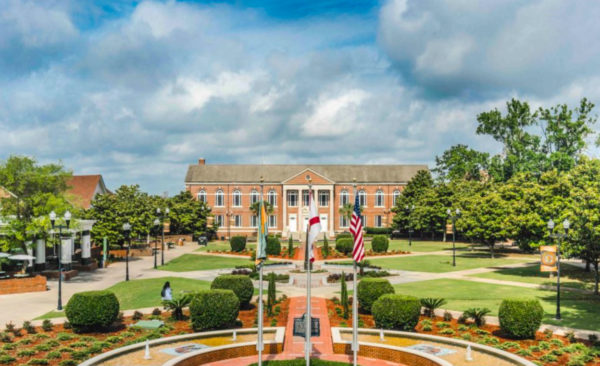Historically Black Colleges and Universities are continuing to get noticed in the U.S. News & World Report’s “Best Colleges 2022” guidebook. Most notable is the improved ranking of Florida A&M University, which managed to secure a third year as the highest-ranking HBCU among top public universities across the country.
This year FAMU landed at 104, up 13 spots from last years 117, on the list totaling more than 200 colleges and universities. The institution founded in 1887 in Tallahassee, Florida, boasted an undergraduate applicant pool of more than 7,000 students for the Fall 2021 semester; just over 2,200 were accepted.

“Moving up 13 places is a testament to our focus on student success and the dedication of our faculty, staff and students to the tenets of our strategic plan, FAMU Rising,” said FAMU’s 12th President Larry Robinson in a prepared statement. “Our intentionality and teamwork allow us to focus acutely on opportunities and more effectively address challenges.”
FAMU, home of the proud Rattlers, also landed among the top 10 HBCUs, both private and public, again, this year at the number-seven spot. Last year the school tied for for seventh alongside North Carolina A&T University. The home of the Aggies now ranks number eight, nudging out Fisk and Claflin universities, respectively landing at the ninth and 10th place.
Schools ranked in the annual guidebook, which is on its 37th edition, are measured in the following areas:
- Graduation and retention rates
- Social mobility
- Graduation rate performance
- Undergraduate academic performance
- Undergraduate academic reputation
- Faculty resources for the 2020-2021 academic year
- Student selectivity for the Fall 2020 entering class
- Financial resources per student
- Average alumni giving rate
- Graduate indebtedness
“I am especially excited by our rise in the Social Mobility Index ranking because it reflects our 133-year commitment to transforming the lives of students regardless of their socioeconomic status or whether they are among the first in their family to attend college or are from a long line of Rattlers,” Robinson said. “At FAMU, our faculty and staff recognize the promise in every student and understand society’s need for the contributions of our graduates.”
The social mobility index is calculated by determining the success rate of students receiving academic funds from the Pell Grant. According to the guidebooks methodology, “Altogether, this metric assesses each school’s level of support for students from underserved backgrounds relative to all its other students.”
FAMU Board of Trustees Chairman Kelvin Lawson said, “The rise in our rankings illustrates what we can do with a focused plan and improved investment, both of which are critical to our success. It is a statement about a joint effort between our Board and the President to establish and stick with key priorities.”
Robinson and board members agree the ultimate goal is to crack the top 100 list of public schools, proving HBCUs, FAMU in particular, are just as strong a competitor in academia as predominantly white institutions of higher learning.
“We want to continue to push the envelope and focus on ongoing improvement in our operating model as we continue our march to the top 100 colleges and universities in the nation,” said Lawson.


